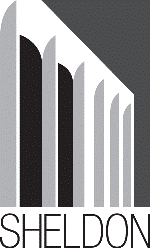Fine and Performing Arts, Hixson-Lied College of

Sheldon Museum of Art: Catalogs and Publications
Date of this Version
2003
Citation
Sixteenth Annual Statewide Exhibition, Sheldon Memorial Art Gallery and Sculpture Garden, University of Nebraska-Lincoln, 2002-2003
Abstract
The subject of Town and Country: Landscape in American Art seems an appropriate topic particularly in Nebraska where the land plays an integral part in defining our identity. The geography provides us physical sustenance as well as aesthetic nourishment. There is a closeness to the land that is perhaps even more evident in the plains then anywhere else on earth.
Landscape painting became a significant form of artistic expression in the 19th century. No longer merely the idealized backdrop for religious, classical or allegorical subjects, landscape itself became the topic of concentration. The British artist John Constable (1776-1837) and other landscape painters of his generation are credited for raising the regard for landscape art by portraying, with keen observation and skill, their immediate surroundings. This development contributed to radical changes in art. Through their constant study of nature, artists moved away from purely descriptive depictions towards accounts of personal visual experiences. Modernization and the changes that occurred as a result of development and expansion, have spurred further interest and reaction towards the landscape. The works in Town and Country: Landscape in American Art present the varying ways artists respond to their surroundings as they continue to explore and search for their place within them.
Throughout history the human relationship with nature has oscillated between reverence and dominance. Using landscape as a metaphor, Eugene Savage perhaps makes reference to this dichotomy in his landscape painting titled Almighty Spring. Like the Italian miniature painters who influenced his work,Savage's mural-like painting places The Virgin Mary and Jesus in a prominent foreground position. He then digresses and includes a landscape that does not simply act as a backdrop but fills the painting with the color and shapes of spring. Mary's form mimics nature's shapes and the veil she wears melds into the nearby rock formations, so much so that viewers are less certain which of the two subjects is given greater importance. Even the title Savage gives his work makes reference to the interrelationship of the figures and the land.


Comments
All images are copyright by the original artists. Publication copyright 2003 The Regents of the University of Nebraska